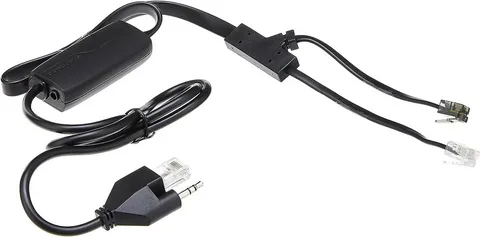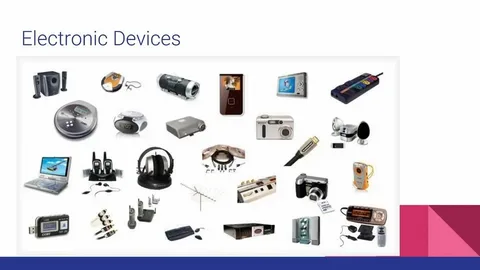Understanding the Electronic Hook Switch | How It Works and Why You Need It
Irrespective of whether it’s an office, call center, or for personal use, phone functionality remains essential in modern telecommunication systems. One feature that a lot of people overlook that contributes greatly in phone systems is the electronic hook switch (EHS). It enables smooth communication between the handset and headset systems for ease of use and efficiency.
What is an electronic hook switch? How does a hook switch work? What is its relevance in today’s telecommunications?
In this blog, we’ll provide all the information needed on electronic hook switches from how it functions to its advantages, and key attributes. Let’s get started.
What is the Purpose of Electronic Hook Switch Cables?
Before anything else, let’s answer the question regarding the purpose of electronic hook switch cables.
An electronic hook switch cable is a type of an office phone cable utilized in contemporary work settings to connect the receiver with the switchboard of the phone. The purpose of EHS cables is to utilize an electronic vine in place of the traditional mechanical handset hooks for greater versatility and efficiency. This is particularly important in integration of headsets into the system.
In old phone systems, when you took off the headset, the hook switch activated which signaled the system to pick up the call. With an EHS, the user can now automate the picking up, hanging up, or putting on hold, so that the tasks do not require the user lifting or placing the headset back in the cradle. These actions are done electronically.
This integration is particularly beneficial for phone heavy positions like in customer support or sales, making the connection between headset and phone easier and more smooth.
What is an EHS Adapter?
What, then, is an EHS adapter?
An EHS adapter (Electronic Hook Switch Adapter) is designed to integrate headsets in conjunction with an office phone that has an electronic hook switch. The user can now operate calls using a headset and therefore will not have to touch the handset of the phone.
The adapter directly connects the headset to the phone system and facilitates control over features such as:
- Answering:
- Ending calls
- Placing calls on hold
- Adjusting volume
The latter is crucial in scenarios such as call centres or offices where employees need to remain hands-free for optimal efficiency. The EHS adapter supports the hook switch mode, allowing employees to utilize all the features of a traditional phone without physically having to touch it.
Now, let’s take a step back and explore “how does a hook switch work?” in greater depth.
The hook switch is a feature of common traditional telephones that works upon lifting the receiver off the cradle. To put it simply, when you pick up the receiver:
– The hook switch gets released, making the phone line live and permitting you to speak.
Also, when the receiver is put back, the hook switch will activate again and end the call.
In today’s electronic systems, the hook switch does not depend purely on the handset being lifted or lowered. Rather, with an electronic hook switch (EHS), the system performs these actions electronically.
What is Hook Switch Mode?
If you work with systems dealing with televisions, the word ‘hook switch mode’ may come up. Let’s break that down:
As stated before, Calls can be answered or hung up automatically without manually pulling the receiver using hook switch mode, which is an electronic signal. In modern communication devices, the EHS enables control of the phone’s hook switch without any physical touch.
If hook switch mode is dialed in with the EHS adapter, people will be able to:
- Press a button on their headsets to answer calls without any hassle.
- Converse freely without needing to place the headset down to hang up.
This ability enables people who work in fast paced and physically demanding roles to be fully hands-free.
How Does an Electronic Hook Switch Work?
Now we get to the most important question:
“How does an electronic hook switch work?”
It is very simple, the electronic hook switch simply does the opposite of what the mechanical switch used to do, and connects the electronic signal instead. A power supply is used by the system to switch calls on and off. Communication devices like headsets can have their functions controlled without physical action.
An explanation of its operation follows:
Connection: The EHS adapter connects your headset to the phone system.
Call Activations: When a call is received, the EHS automatically initiates the hook switch mode which enables the headset to accept the call.
Call Operations: You are able to manage call features such as mute, volume, and call termination during the call and without reaching for the phone.
Call Conclusion: After the call, the system electronically disconnects the call simulating the action of returning the handset to the cradle.
The use of an electronic hook switch simplifies communication and improves productivity and ergonomics for users on prolonged calls.
What exactly do we mean by off-hook switch?
It is probable that you have heard the term off-hook switch when talking about e-hook switches. So what is it exactly?
An off-hook switch is the opposite of the hook switch. While the hook switch means that the handset is received or replaced back to the cradle. The off-hook will indicate that the phone is in use with the handset up from the cradle meaning ‘off-hook’.
In Off-Hook operations, the electronic hook switch engages the system instead of a physical lifting action of a handset. When a phone is in use with a headset, the EHS adapter engages the switch electronically indicating that the phone is used and the call is already in progress.
What is the EHS Port on a Phone?
We have covered functionality and one may ask,
“What is the EHS port on a phone?”
Modern office phones contain an EHS port which is a specific connector aimed to support hook switch adapters. The EHS port is where the phone and the head set paste with the phone system through hook switches. This port allows, functionalities such as:
- Receiving a call without picking the handset
- Dropping the call from the headset
- Controlling the call from the headset buttons
This port is often positioned at the sides and beneath the phone, connecting the EHS adapter at this position enables smooth joining of the head set and the phone system.
What Are The Advantages of EHS Adapters?
You still could wondering:
“What is an advantage of electronic hook switch adapters?”
Take a look at some of the advantages listed below:
✅ Hands-Free Operation
With electronic hook switch adapters, employees can carry on with their work while still on the phone as call management can be carried out without having to lift the handset. They can therefore remain fully engaged at work.
✅ Improved Comfort
Users do not have to lift the handset or hang it on the receiver in order to put on the headset. This is quite useful, especially for call center workers who receive passengers.
✅ Increased Productivity
Users are now able to remotely manage their devices while focusing on their tasks, taking notes, or even at times intercom switches. This makes it easier for employees to concentrate when they’re not interrupted.
✅ Space Saving
Eliminating the need or the use of handsets by incorporating the EHS with the headsets makes it easier to save space as separate handsets no longer need to clutter the desks and offices.
✅ Enhanced Call Management
Contemporary EHS systems have made it possible for users to do more advanced call management functions with the use of headsets. Users have the ability or control to mute calls, adjust the volume, and many more.
Is It Advisable to Change the Metal Electrical Boxes for Plastic Ones?
While not exactly related to electronic hook switches, you might encounter the argument:
“Should you swap out metal electrical boxes for plastic ones?”
The solution will vary depending on your needs:
- Plastic boxes are easier to install, they don’t conduct electricity, and they are cheaper, so they may be adequate for homes and offices.
- Metal boxes, on the other hand, are tougher, more resistant to fires, and may be necessary for areas with heavy electrical loads.
- That selection is mostly influenced by safety considerations and the environment.
Final thoughts
The electronic hook switch and its corresponding adapters are integral to contemporary communication systems, especially in settings with a high demand for efficiency, hands-free operation, or sophisticated call management. Users connecting to EHS headsets exploiting the hooks can effortlessly communicate in hands-free mode with reliability as they work from home, manage a call center, or flexibly adopt different workspaces in the office.
To summarize:
What is an electronic hook switch? It is a system that allows hands-free control over the phone via an electronic link which does not require lifting the handset.
What is an EHS adapter? It is a gadget that allows the connection of headsets to phones through electronic hook switches.
How does a hook switch work? It controls the phone’s line mechanically or electronically, letting the user answer or end a call.
What is hook switch mode? It is the electronic command for answering and terminating a call through the handset.
What is the significance of electronic hook switch cables? They connect the headsets to the telephones and facilitate the management of calls from a distance.




Post Comment